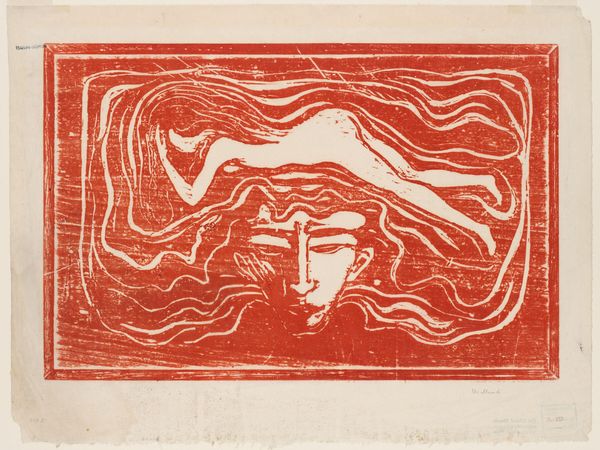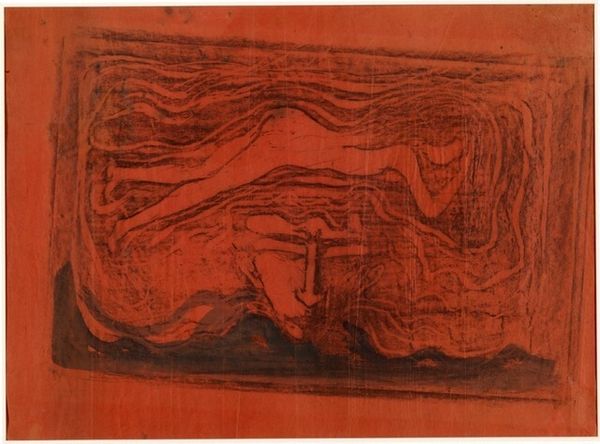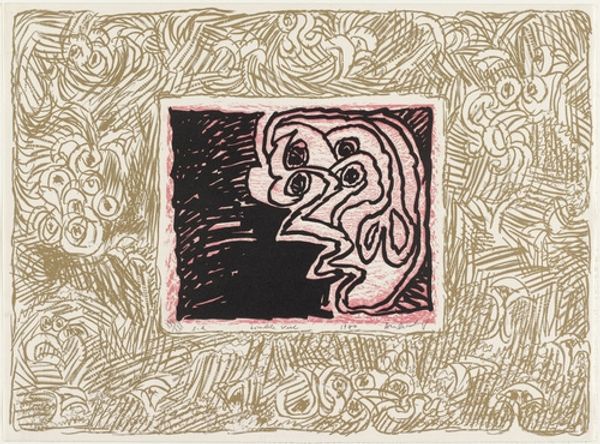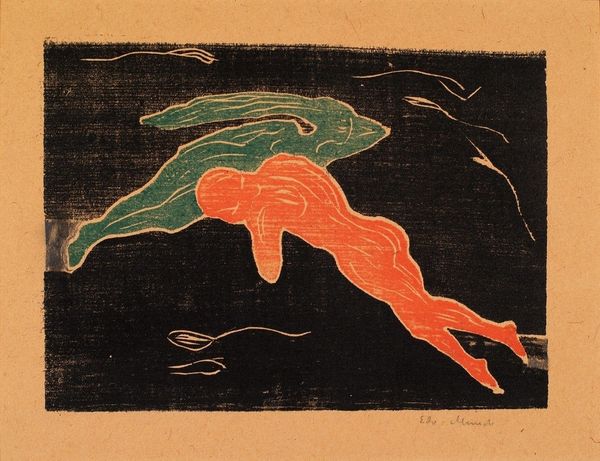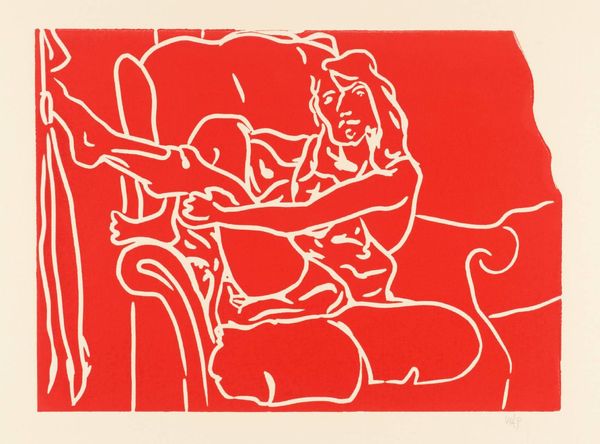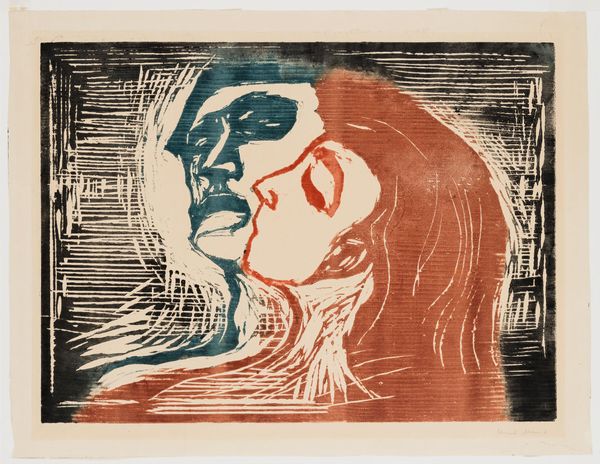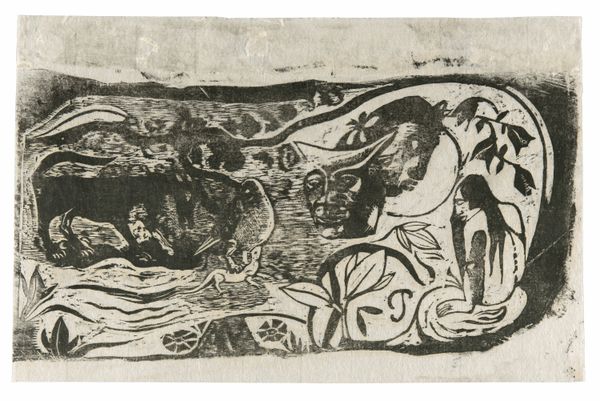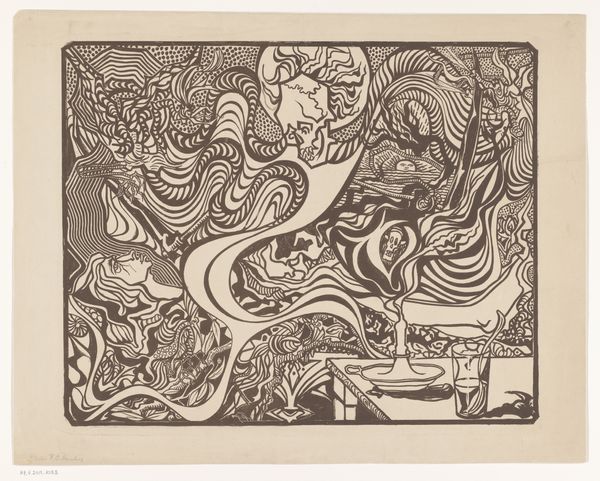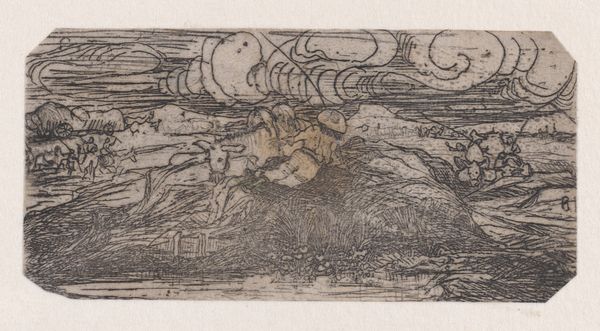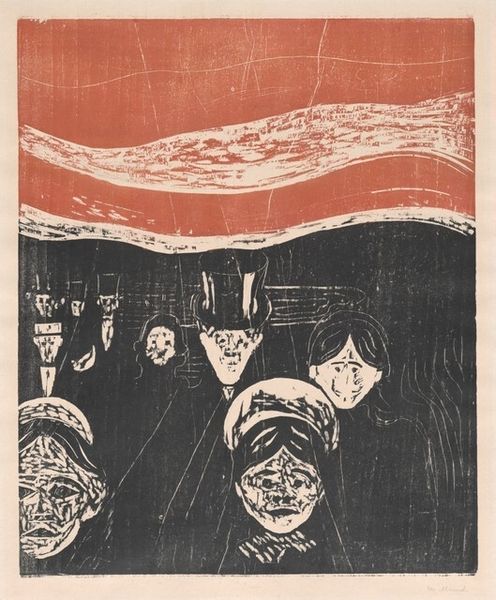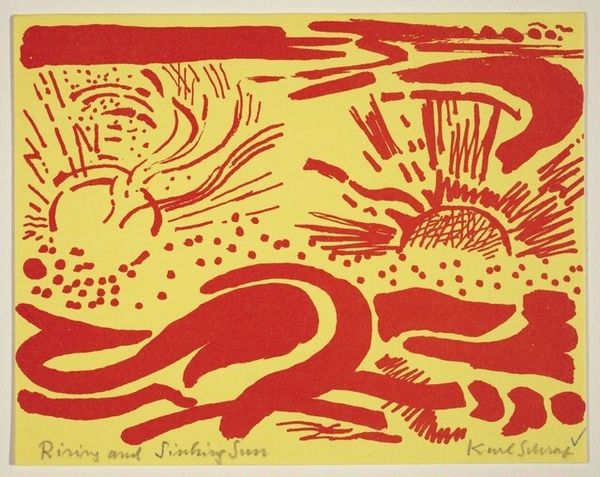
print, etching
#
portrait
# print
#
etching
#
etching
#
figuration
#
linocut print
#
expressionism
#
line
#
symbolism
Copyright: Public Domain: Artvee
Editor: Here we have Edvard Munch's 1897 etching, "In the Man's Brain," presented in striking red and white. The composition, with its floating figure above a stark face, feels incredibly intimate and almost oppressive. What do you see when you look at the means and methods of this particular work? Curator: The etching medium is crucial here. Consider the labor involved, the physical act of carving into the metal plate. Each line, each scratch, is a direct trace of Munch's hand, his intention. The choice of red ink isn’t arbitrary either; it speaks to blood, passion, perhaps even violence – all raw materials used for psychological dramas here, quite literally, as medium to express inner torments. How do the marks made change the way we look at portraiture? Editor: That’s fascinating. I hadn't considered the act of creation being so violent. Do you think that this etching is suggesting ideas on labor and the construction of internal thought? Curator: Exactly! Think about the consumption of art, even back then. Etchings were relatively affordable, democratizing access to Munch’s vision. So it raises a vital question: what’s being commodified here? Emotion? Mental landscape? Or the labor of a troubled artist wrestling with his demons through materials and process. It prompts discussions about the economy of artmaking. This contrasts it with more traditional mediums of fine art that required commissions or higher prices. Does this then influence a potential art consumer of the period and the current reception of it today? Editor: This has shifted my view. It's not just a symbolic work, it's an object created through a specific material process, influencing the understanding of the internal. Curator: Precisely! Considering the materials, labor, and intended consumer gives us a richer, more grounded interpretation. It provides insight into both the art's production and cultural significance. Editor: I never thought of it that way! Thank you for shining a new light on Munch’s creative practice.
Comments
No comments
Be the first to comment and join the conversation on the ultimate creative platform.
